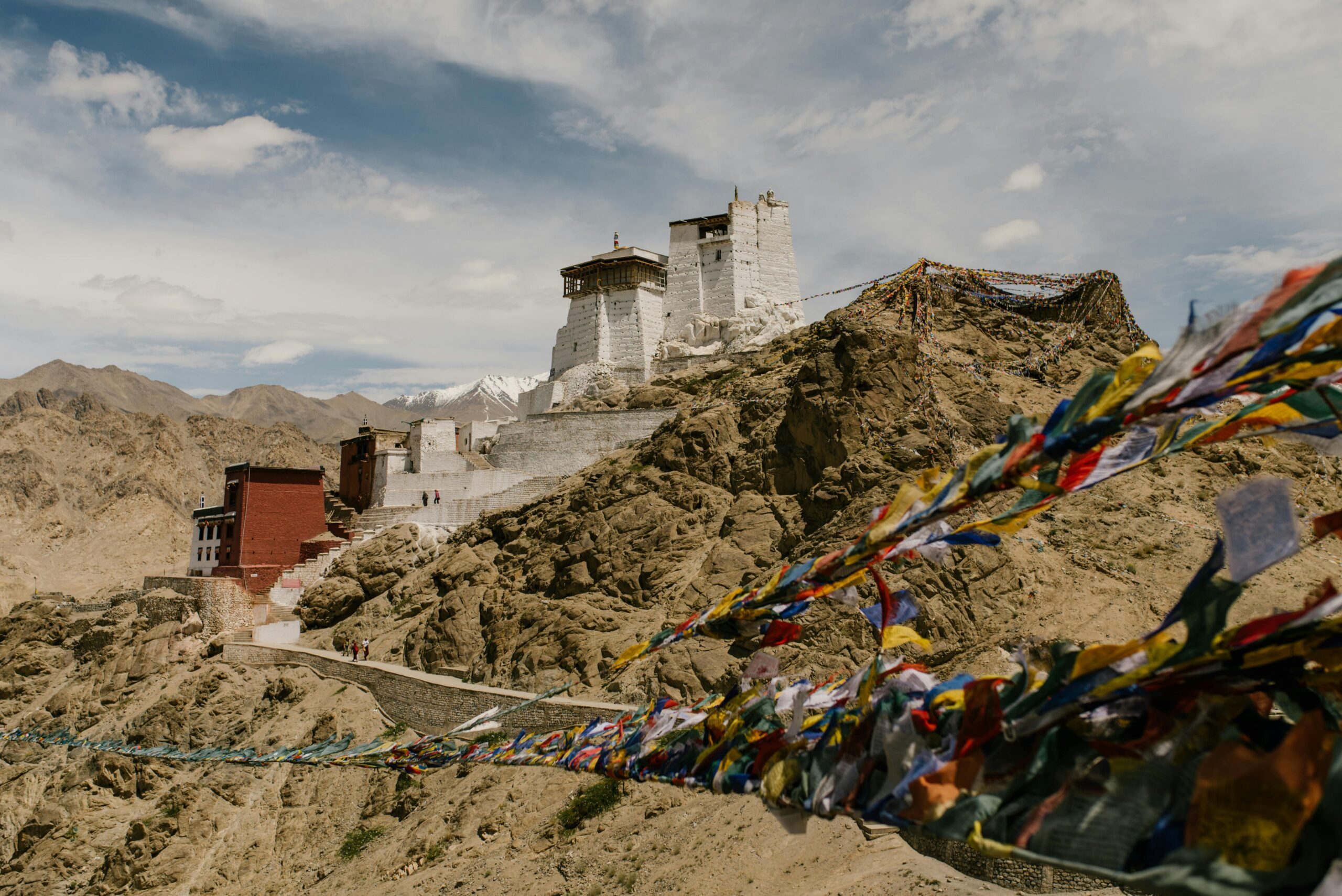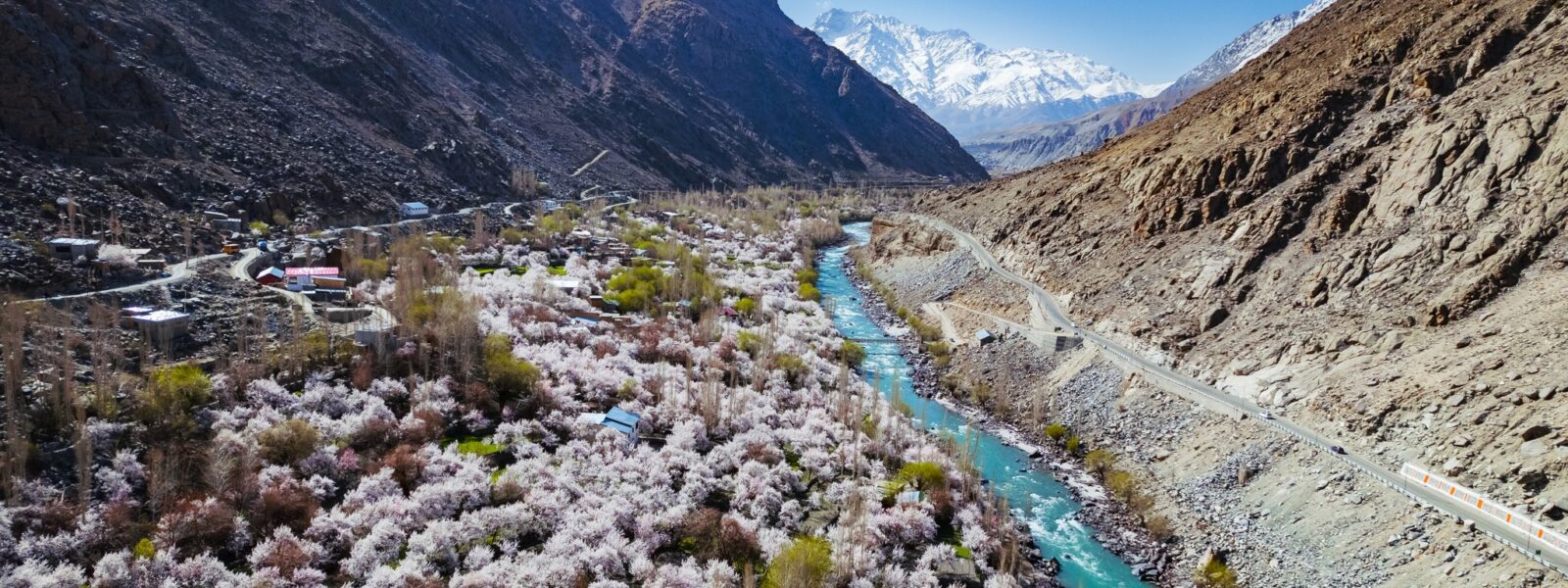Listening to the Mountains Remember

By Elena Marlowe
Prelude — The Geography of Light
Where altitude becomes emotion
In Ladakh, light does not merely arrive; it takes its time to think. It wanders along the ridges of forgotten glaciers, falls gently upon stupas that have watched centuries pass in stillness, and lingers inside every breath drawn at 3,500 meters. When I first reached the Indus valley, it felt less like an arrival and more like being rewritten by silence itself. The light here is not passive. It questions. It teaches. It reminds you how to breathe again.
In this land where light learns to breathe, every facet of nature seems to illuminate the soul.
Traveling through Ladakh is a conversation with thin air and immense quiet. The mountains are not backdrops but witnesses—stoic and half-remembered. Beneath them, barley fields shimmer like ideas forming. Every color has a texture: ochre dust, sapphire skies, and the slow gold of dawn. What begins as geography becomes philosophy. The higher one climbs, the more the body forgets comfort, and the more the mind begins to listen.
There is no perfect path through the high Himalayas, only a rhythm that unfolds with patience. Local women in Choglamsar carry apricots in woven baskets, their laughter punctuating the wind. A monk in Shey fixes a loose prayer flag and hums a note that seems to suspend time. These moments are not postcard images; they are instructions on how to be still in motion.
“In Ladakh, silence is not the absence of sound—it is the texture of thought.”
The light, fragile yet immense, teaches travelers something more valuable than direction. It offers an apprenticeship in slowness. This is not a journey for those seeking altitude records or itineraries. It is a pilgrimage toward awareness, guided by wind, dust, and the quiet certainties of an ancient plateau.
Part I — The First Breath of the Plateau
The cartography of silence
Descending from the aircraft into the oxygen-thin air of Leh is like entering a slower clock. The mountains appear close enough to touch, yet unreachable, their outlines soft with sun. Breathing feels heavier, more deliberate—each inhale a negotiation with altitude. For a traveler from the plains, this first breath is an initiation: the geography of Ladakh begins inside your lungs.
Along the road to Shey and Thiksey, the Indus runs silver and thin. At dawn, I watched a woman collecting river stones. Her hands, darkened by sun and years, moved with an almost ceremonial care. She told me that her family had lived by this river since “the time before roads.” To her, the river was not a border but a lineage—a moving ancestor.
Every village here holds the memory of water. Springs hide under dunes, channels of meltwater cut lines through barley fields. People move with the seasons, adjusting life to the earth’s smallest moods. There is philosophy in this adaptability: resilience without resistance. The mountains have already taught them what permanence means—it doesn’t exist.
At altitude, silence becomes a landscape. The hum of wind replaces traffic, and even the mind’s noise eventually thins out. You learn to read time by the tilt of light. Morning is not an hour; it is the angle at which warmth touches the stones. The first breath of the plateau is an understanding: that survival and serenity share the same root.
Part II — Villages That Dream in Stone
Time kept by prayer wheels
In a monastery near Hemis, the courtyard awakens before the sun reaches its walls. The chants of young novices echo between prayer flags, merging with the whistle of wind. The sound is both ancient and fragile, like a thread connecting generations across thin air. Watching them, I realize that here, time does not flow forward—it revolves, like the prayer wheels spun with quiet devotion.
Monasteries in Ladakh are not monuments to faith but to patience. Their murals, half-faded, reveal more through absence than color. A single butter lamp flickers near an image of Avalokiteshvara, its flame swaying like breath itself. Outside, an old monk repairs a mud wall using straw and sun, humming under his breath. His rhythm matches the mountains—a slow, deliberate endurance.
The rhythm of these villages—Diskit, Alchi, Hemis—is unhurried yet exact. Stone houses lean into each other for warmth. Children trace prayers in dust. Every gesture suggests continuity. In the West, we record history in books; in Ladakh, they preserve it in habit, in the repetition of small kindnesses.
For travelers seeking wisdom in movement, Ladakh teaches the opposite: stay still long enough, and the world reveals its geometry. Stillness here is an active verb, a discipline of attention. The locals call it *nyoma*—quietness that listens. Under the Himalayan sky, it becomes a way of being rather than a mood.
Part III — Between Wind and Memory
Walking where silence has weight
There are paths in Ladakh where the wind is your only companion. It sculpts the ridges, erases your footprints, and hums across the hollows like a language the mountains still remember. When I walked through the barren folds near Likir, every sound—boots, breath, heartbeat—was absorbed by stone. The earth beneath my feet was once ocean floor; tiny fossils of the Tethys gleamed like whispers from another era.
Walking here is an act of humility. There are no distractions, no landmarks to remind you of progress. Only the texture of time underfoot. The light shifts with every step, softening the ochre cliffs, then sharpening them again. I passed an old shepherd who told me, “In these mountains, even silence has weight.” He smiled as if he had said something obvious. I nodded, but it took me days to understand. The silence here isn’t emptiness—it’s density, the echo of all that has passed through and stayed.
The longer one walks, the more the self dissolves into landscape. The high desert reveals no mercy, yet it offers honesty. Its beauty is not the kind you photograph; it’s the kind that rewires your perception. A journey in Ladakh is a dialogue with impermanence, a reminder that we are just temporary guests in an enduring geography.
By the time I reached the edge of the Indus again, the wind carried a different tone—less defiant, more patient. Perhaps it was me who had changed. The mountains remained the same, indifferent and infinite, breathing in rhythms older than memory.
Part IV — The Afternoon Light of Leh
Conversations that vanish in dust
In the bazaar of Leh, altitude meets humanity. Apricots gleam on wooden carts beside strands of turquoise beads; tourists sip butter tea next to monks scrolling on their phones. This is the paradox of modern Ladakh: a place where centuries coexist, where prayer flags flutter above Wi-Fi routers, and where silence competes gently with conversation.
Walking through the narrow lanes, I notice how every sound fades quickly—the call of a vendor, a child’s laughter, even the distant honk of a truck—all swallowed by dust and air. The city feels temporary, like a pause between mountains. Yet it thrives in this fragility. Traders from Nubra bring salt and wool, students from Kargil share poetry in cafés, and every sunset turns the whitewashed walls into soft gold.
Leh is not the kind of capital that imposes. It hums quietly, as if aware of its delicate position between worlds. Here, globalization does not erase identity; it reveals how adaptable it can be. Watching people greet each other in Hindi, Ladakhi, and English, I realize that survival in altitude is less about endurance and more about grace.
I stop by a small bookstore where the owner offers tea and stories. He says, “Tourists come for silence, but we never lost it. It’s always there—under everything.” His words stay with me as I leave the market: silence in Ladakh is not absence; it’s the background that allows everything else to exist.
Part V — When Dusk Learns to Speak
The philosophy of altitude
Evening in the Himalayas arrives without hurry. The light withdraws in slow gestures, and the wind softens as if out of respect. From a ridge above the Indus, the river reflects the last gold like an old secret. In that moment, Ladakh feels sentient—a living entity breathing beneath the sky.
At dusk, I sit beside a shepherd’s hut. Smoke curls upward, carrying the scent of juniper and yak butter. Across the valley, a monastery bell rings once, its note suspended in distance. I think about how altitude alters perception: not because of thin air, but because of proximity to the infinite. The mountains demand humility; they strip away excess thought until all that remains is attention.
To live—or even briefly exist—here is to learn a quieter form of courage. The kind that doesn’t announce itself. The kind that accepts the vastness without needing to conquer it. In Ladakh, every sunset teaches this lesson: stillness is not stagnation; it’s understanding. When dusk learns to speak, it doesn’t use words—it uses breath, wind, and light fading gently across the stone.
Closing Note — A Quiet Geography
Ladakh is not simply a place on a map; it is a mirror of interior space. The light, the wind, the altitude—all serve as reminders of our own topography of thought. Traveling here is not about escape but return: to patience, to observation, to gratitude.
As night settles over the valley, the stars arrive with a clarity that cities have long forgotten. The mountains become silhouettes of memory, and the Indus hums like a lullaby written in water. Somewhere in that stillness, you understand: the journey was never outward. The geography was always within.
FAQ
What is the best time to visit Ladakh for its unique light and atmosphere?
The ideal months are from May to September, when the skies remain clear and the roads to remote valleys are open. During this period, the contrast between light and shadow is at its most vivid, creating Ladakh’s signature crystalline atmosphere.
Is it possible to explore Ladakh slowly and responsibly?
Yes. Many local initiatives promote sustainable travel by encouraging homestays and low-impact treks. Slow travel allows visitors to adapt to the altitude while engaging meaningfully with local communities, preserving both culture and environment.
How does Ladakh differ from other Himalayan destinations?
Ladakh’s high-altitude desert landscape, Buddhist heritage, and balance of silence and resilience make it distinct. While neighboring regions focus on trekking or luxury, Ladakh’s essence lies in its introspective quiet and its connection to ancient trade routes.
What makes the light in Ladakh so special?
The region’s elevation and dry air create a rare clarity. Light refracts sharply during dawn and dusk, painting the landscape in layers of gold, amber, and blue. Photographers and writers often describe it as “living light,” for it seems to move with emotion.
Conclusion
To witness Ladakh is to participate in an unfolding silence. It asks not for admiration but for awareness. The mountains, rivers, and people teach travelers a slower rhythm—a way to inhabit the world with humility and grace. As light learns to breathe across the plateau, so do we, relearning how to be present in our own fleeting lives.
She is the narrative voice behind Life on the Planet Ladakh, a storytelling collective exploring the silence, culture, and resilience of Himalayan life.
Her work reflects a dialogue between inner landscapes and the high-altitude world of Ladakh.

